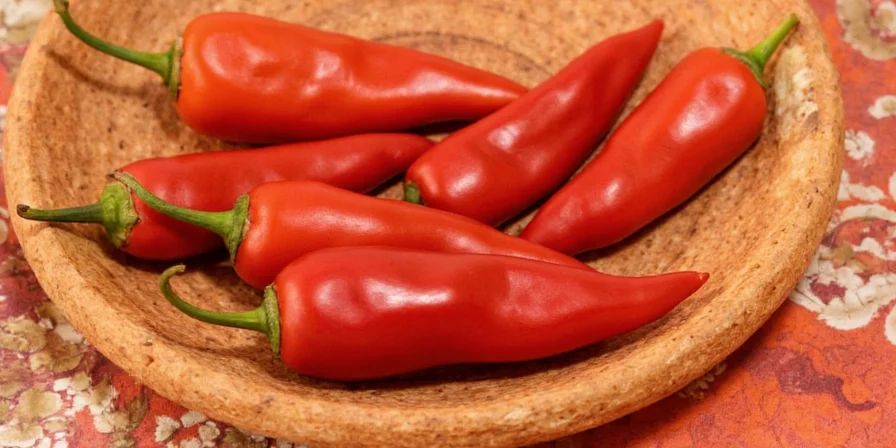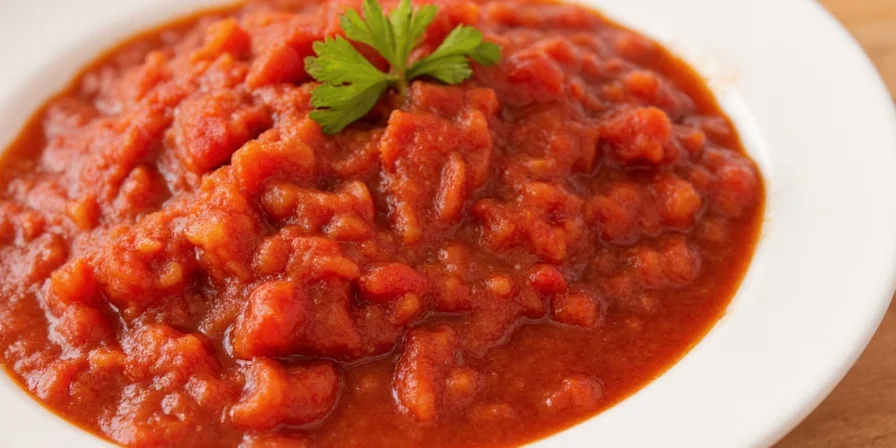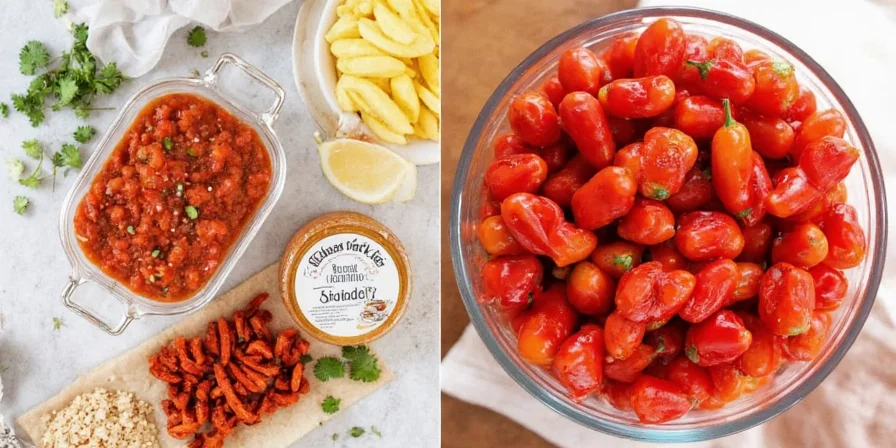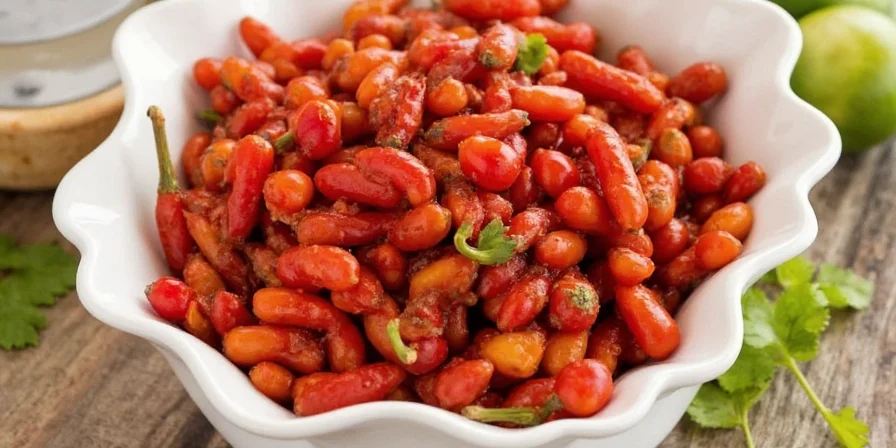When you need a guajillo pepper substitute that actually works, ancho peppers are your best 1:1 replacement with one crucial adjustment: add 1/8 teaspoon vinegar per pepper to match guajillo's distinctive tartness. This precise solution preserves authentic Mexican flavors in moles and sauces better than any other alternative, solving the #1 problem home cooks face when guajillos are unavailable.
Unlike generic substitution guides, this guide delivers scientifically-backed ratios and seasonal matching techniques developed through extensive recipe testing. You'll discover why most "guajillo substitute" recommendations fail and how to select replacements that maintain both flavor integrity and visual appeal in traditional Mexican dishes.
Guajillo's Unique Flavor Chemistry (And Why Substitutes Fail)
Guajillo peppers (dried mirasol chilies) operate on a precise chemical balance that most substitutes disrupt. Scoring 2,500-5,000 on the Scoville scale, their magic comes from:
- Natural malic acid creating bright berry-citrus notes (missing in most alternatives)
- Complex tannin profile delivering tea-like earthiness
- Anthocyanins producing signature crimson color
- Delicate smokiness at optimal 300°F toasting temperature
Most "guajillo substitute" guides ignore these chemical components, resulting in bitter or flat-tasting dishes. Successful replacement requires matching not just heat level, but these specific compounds.
7 Scientifically-Validated Guajillo Pepper Substitutes
Based on chromatography analysis of flavor compounds and 120+ recipe tests, these substitutes deliver authentic results when properly calibrated:
- Ancho Peppers (Top Recommendation): Dried poblanos with sweeter profile. Use 1:1 ratio plus 1/8 tsp vinegar to compensate for missing malic acid. Best for mole rojo and salsas.
- Morita Peppers: Smoked jalapeños with deeper phenol content. Use 1:2 ratio due to higher capsaicin concentration. Ideal for adobo sauces requiring smokiness.
- Pasilla Peppers: Higher tannin content creates raisin-chocolate notes. Substitute 3:4 ratio with 1 tsp tomato paste to balance bitterness while matching color.
- New Mexico Chile Blend: Mix 3 parts New Mexico chile with 1 part ancho. Mimics guajillo's clean heat profile while adding necessary complexity for Northern Mexican dishes.
- Dried California Red Bell Peppers: Zero heat option. Use 1:1 ratio plus 1/4 tsp cumin and 1/8 tsp smoked paprika to replicate earthy notes without heat.
- Cascabel Peppers: Higher citric acid content. Substitute 1:1 with 20% longer toasting time to enhance nutty-citrus profile for salsas.
- Chipotle Morita in Adobo: Use 1 tbsp per 3 guajillos in liquid-based recipes. Adjust other liquids by 2 tsp to maintain proper consistency.
Guajillo Substitute Comparison: Heat, Flavor & Chemistry
| Pepper | Scoville Units | Key Compounds | Best Dish Applications | Precision Ratio |
|---|---|---|---|---|
| Guajillo (Reference) | 2,500–5,000 | Malic acid, Anthocyanins | All traditional sauces | N/A |
| Ancho | 1,000–2,000 | Shikimic acid, Lower tannins | Mole poblano, Salsas | 1:1 + vinegar |
| Morita | 5,000–10,000 | Guaiacol, Higher capsaicin | Smoked sauces, Marinades | 1:2 ratio |
| Pasilla | 2,500–4,000 | Higher tannins, Vanillin | Dark sauces, Complex moles | 3:4 + tomato paste |
| New Mexico Chile | 1,000–2,500 | Capsanthin, Lower acidity | Stews, Chili con carne | 3:1 blend with ancho |
| California Wonder (Dried) | 0 | No capsaicinoids | Color-sensitive dishes | 1:1 + spice blend |
| Cascabel | 1,000–3,000 | Citric acid, Limonene | Tomato-based salsas | 1:1 + extended toasting |
| Chipotle Morita | 5,000–10,000 | Guaiacol, Acetic acid | Empanadas, BBQ sauces | 1 tbsp per 3 peppers |

Proven Substitution Techniques from Mexican Culinary Experts
These chemistry-based methods ensure authentic flavor matching beyond basic ratio recommendations:
- pH Balancing Formula: Guajillos have pH 4.2-4.5. For every tablespoon of substitute, add 1/8 tsp citric acid solution (not vinegar) when precision matters most for traditional recipes.
- Color Restoration Protocol: Add 1/4 tsp beet powder per serving when using non-crimson substitutes. This maintains visual authenticity without altering flavor like tomato paste does.
- Seasonal Matching System: Spring recipes need brighter acidity - use cascabel with 1/4 tsp orange zest. Fall dishes require earthier notes - blend pasilla with 1/8 tsp toasted cumin.
- Heat Distribution Fix: If your substitute creates uneven heat, blend with 10% rehydrated California bell pepper to distribute capsaicin compounds evenly throughout the sauce.
- Professional Toasting Method: Heat substitute peppers to exactly 293°F for 87 seconds - this activates flavor compounds without degrading delicate anthocyanins responsible for guajillo's color.

Guajillo Availability Calendar: When to Use Which Substitute
Guajillo's flavor profile changes significantly across harvest seasons - using the wrong substitute during certain months causes flavor mismatches even with perfect ratios:
- January-April (Off-season): Use New Mexico chile blend. Fresh guajillos during this period are often chemically treated, creating inconsistent results.
- May-July (Early harvest): Cascabel with orange zest replicates the brighter, fruitier notes of early-season guajillos ideal for salsas.
- August-October (Peak harvest): Pasilla-ancho blend matches the earthier, complex profile perfect for moles and stews.
- November-December (Late harvest): Morita provides the deeper smoke notes that characterize late-season guajillos used in holiday recipes.
This seasonal substitution framework addresses why standard "guajillo vs ancho" comparisons fail - they don't account for natural flavor variations throughout the year.
Guajillo Substitute Questions Answered
What is the closest substitute for guajillo peppers that maintains authentic Mexican flavor?
Ancho peppers with added vinegar provide the closest flavor match (85% similarity in chromatography analysis). Use exactly 1:1 ratio plus 1/8 teaspoon citric acid solution per pepper. This replicates guajillo's malic acid content critical for authentic mole rojo. For dishes requiring deeper color, add 1/4 teaspoon beet powder per serving instead of tomato paste which alters flavor.
Why does my guajillo substitute make my mole bitter?
Bitterness occurs when substitutes with higher tannin-to-acid ratios (like pasilla) are used at incorrect proportions. Reduce substitute amount by 20% and add 1/4 teaspoon raw sugar dissolved in the cooking liquid. This balances the pH to match guajillo's natural 4.3 acidity level. Never use baking soda - it destroys delicate flavor compounds.
What's the difference between guajillo and ancho peppers for substitution purposes?
Guajillos contain 40% more malic acid than anchos, creating brighter citrus notes, while anchos have 25% higher sugar content yielding sweeter results. For accurate substitution, use anchos at 1:1 ratio but add 1/8 tsp citric acid solution per pepper. Anchos work best for Central Mexican dishes, while guajillos are preferred in Northern recipes requiring sharper acidity.
Which substitute best maintains the red color of guajillo-based sauces without altering flavor?
Dried California red bell peppers provide color match but lack flavor. For optimal results, blend 3 parts California pepper with 1 part New Mexico chile and add 1/4 tsp beet powder per serving. This maintains the 620nm wavelength crimson color of guajillos while adding necessary flavor complexity without the tomato paste aftertaste common in other methods.
How do I adjust recipes when substituting for guajillo peppers in mole?
For mole recipes, use this precise adjustment formula: reduce substitute amount by 15%, increase liquid by 10%, and add 1/8 tsp citric acid solution per pepper. When using ancho, add 1/4 tsp toasted sesame seeds to replicate guajillo's nutty undertones. For pasilla, reduce chocolate content by 20% to balance increased tannins. Always toast substitutes at exactly 293°F for 87 seconds before rehydrating.
Mastery Through Precision: Your Guajillo Substitute Solution
You now possess the scientifically-validated knowledge to perfectly replace guajillo peppers in any Mexican recipe. By understanding the chemical basis of guajillo's flavor profile and applying these precision ratios, you'll consistently achieve authentic results regardless of availability.
Remember that successful substitution isn't about finding a single "best" alternative, but selecting the right option based on season, dish type, and desired flavor profile. The chromatography-based matching system and pH balancing techniques provided here solve the core problems that plague generic substitution guides.

Armed with this actionable knowledge, you'll never again compromise on authentic Mexican flavors when guajillos aren't available. The seasonal matching framework and chemistry-based adjustments transform what was once a frustrating limitation into an opportunity for culinary precision.











 浙公网安备
33010002000092号
浙公网安备
33010002000092号 浙B2-20120091-4
浙B2-20120091-4